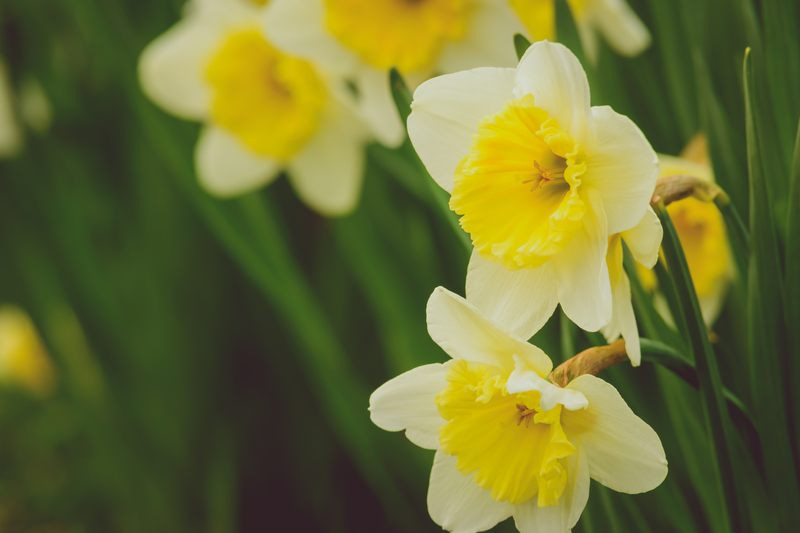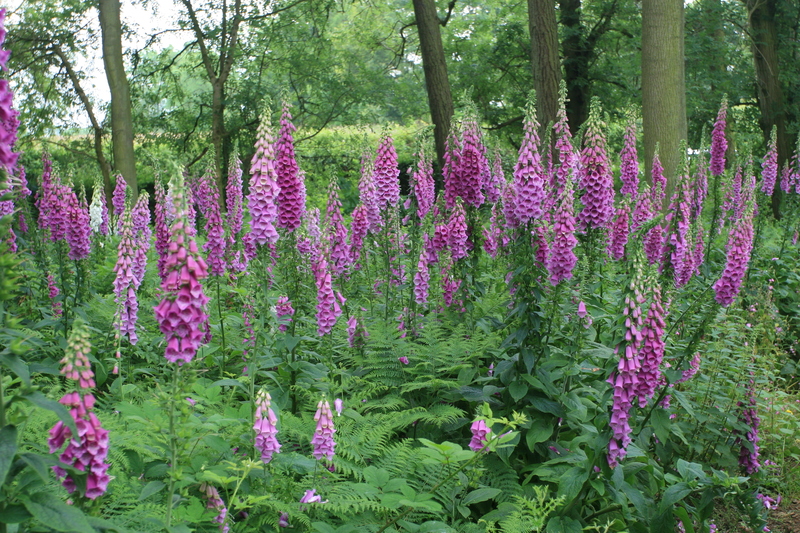Your Step-by-Step to a Kid-Friendly Garden Adventure
Posted on 28/08/2025
Your Step-by-Step Guide to a Kid-Friendly Garden Adventure
Gardening is more than just a hobby--it's an opportunity for fun, education, and bonding, especially with children involved. If you're searching for ways to transform your backyard or community space into an exciting kid-friendly garden, you've come to the right place. This comprehensive guide will walk you through the process, ensuring your garden turns into a playground of growth and discovery for your little ones. From planning and planting to fun activities and safety tips, get ready to embark on your own memorable garden adventure with kids.
Why a Garden Adventure with Kids is Valuable
Creating a kid-friendly garden is about much more than just plants. It's about fostering curiosity, teaching responsibility, and nurturing a lifelong love of nature. Children thrive with hands-on learning, and a dedicated kids' garden provides the perfect outdoor classroom. Some of the key benefits include:
- Hands-on education: Kids learn about plant biology, the environment, and sustainability.
- Creativity and exploration: Gardens are filled with textures, colors, and bugs to investigate.
- Healthy habits: Gardening encourages physical activity and can spark an interest in fruits and vegetables.
- Bonding experience: Spending time together outdoors strengthens family and community connections.

Step 1: Planning Your Kid-Friendly Garden Adventure
Before you dig in, take a little time to plan. A purposeful approach will ensure your garden adventure for kids is both enjoyable and safe.
Choose the Right Location
- Safety first: Select a spot away from hazards like roads, steep drops, or thorny plants.
- Sun exposure: Most vegetables and flowers need 6-8 hours of sunlight per day.
- Accessibility: Ensure the garden is easily accessible for little legs, with clear paths.
Let the Kids Get Involved in Planning
Inviting your children to participate in designing their own child-friendly garden spaces boosts excitement and ownership. Let them pick colors, draw their dream garden, or choose their favorite plants.
- *Ask questions like: "What would you like to grow?" or "Should we add a fairy garden or a bug hotel?"*
- *Plan pathways and sections for play, planting, and relaxing.*
Step 2: Selecting Kid-Friendly Plants and Features
Top Plants for a Children's Garden
To create a safe and engaging garden for children, choose plants that are easy to grow, quick to sprout, and safe if touched or tasted (under supervision). Here's a list to get you started:
- Sunflowers: Fast-growing and dramatic--kids love watching them shoot up!
- Snapdragons: Fun blooms that pinch open and closed.
- Strawberries: Sweet, rewarding, and edible straight from the plant.
- Radishes: Quick to mature--many varieties ready in under a month.
- Herbs (like basil, mint, or chives): Aromatic and fun to taste.
- Pumpkins: Perfect for autumn harvest and carving.
Features to Enhance the Adventure
- Raised beds or container gardens: Easier for kids to reach and manage.
- Mud kitchens: For messy, imaginative play.
- Mini greenhouses: Teach kids about plant life cycles and weather.
- Fairy houses and gnome villages: Stimulate creativity and storytelling.
- Bug hotels: Encourage beneficial insects and teach about biodiversity.
Step 3: Prepping the Soil and Planting
Once your children's garden adventure is planned and your plants or seeds are chosen, it's time to start digging.
Soil Preparation
- Test your soil: Check pH and drainage. Many local garden centers offer simple test kits.
- Mix in compost: Add organic matter to improve fertility--kids love finding worms!
- Loosen the earth: Use child-sized tools to make digging easy and fun.
Planting Together
Show kids how to plant seeds or seedlings. Teach them about spacing, depth, and watering routines. Assign them their own spots or "planting buddies" they can monitor as they grow.
- *Use biodegradable pots for easy transplanting and earth-friendly lessons.*
- *Let children personalize plant markers with their names or drawings.*
Step 4: Creating Zones for Play and Learning
A truly kid-friendly garden adventure has more than just plants. Dedicating zones for play, relaxation, and hands-on educational activities will capture children's attention for the whole season.
Play Zones
- Stepping stone paths: Lead kids from one area to another--let them decorate the stones!
- Enclosed spaces: Willow tunnels, sunflower houses, or trellis "hideouts" make magical nooks.
- Sand or water tables: Great for sensory play and science experiments.
Learning Zones
- Observation stations: Place a bench near flower beds for butterfly and bird watching.
- Weather trackers: Install a rain gauge, wind sock, or homemade sundial to teach weather concepts.
- Compost areas: Let kids toss in food scraps and watch decomposition in action.
Step 5: Making Safety a Priority in a Garden for Kids
Safety should always come first in a garden designed for kids. Here's how to keep your garden adventure both fun and worry-free:
- Avoid toxic plants: Stay away from plants like foxglove, oleander, or daffodils, which are dangerous if ingested.
- Use child-friendly tools: Provide sturdy, lightweight tools with no sharp edges.
- Secure structures: Check that trellises, fences, and raised beds are stable.
- Store chemicals safely: Keep fertilizers and pesticides out of reach--though in a children's garden, organic is best.
- Sun protection: Remind kids to wear hats and sunscreen while gardening.
Step 6: Celebrate Growth with Fun Activities and Learning
A lively garden adventure for children involves more than just watering--plan exciting activities to deepen their engagement and learning:
Fun Activities for the Kid-Friendly Garden
- Garden scavenger hunts: Search for colors, shapes, bugs, or hidden treasures.
- Nature crafts: Use leaves, flowers, and twigs for art projects.
- DIY garden games: From beanbag tosses to hopscotch on stepping stones.
- Recipe experiments: Harvest ingredients for smoothies, herb butters, or veggie pizzas.
- Storytime in the garden: Read nature-themed books on a picnic blanket in the shade.
Educational Opportunities
- Plant diaries: Encourage kids to record plant growth and changes week by week.
- Bug and bird logs: Keep a notebook of wildlife spotted among the plants.
- Science experiments: Grow beans in clear containers to watch the roots sprout.
Step 7: Involving the Whole Family and Community
While your garden may start with your children, the magic multiplies when grandparents, neighbors, or school groups join in. Host weekend garden parties, invite friends to share seeds, or form a mini "garden club" with weekly challenges or contests. This sense of community builds support and creates cherished shared memories.
- Community harvest feasts: Celebrate with meals featuring your garden's bounty.
- Garden art shows: Display kids' painted rocks, crafts, or plant markers for everyone to enjoy.
Step 8: Encouraging Ongoing Engagement and Curiosity
To keep your kid-friendly garden adventure thriving, nurture curiosity all year round. Swap out plants by the season (think pumpkins in fall or bulbs in spring), and introduce new activities or challenges. Teach children that gardening is a cycle--observe changes, prep the soil anew, and watch their skills and confidence grow.
- Seasonal swaps: Try winter sowing projects, or grow microgreens indoors during colder months.
- Continued learning: Read books about plants, cook together using fresh herbs, or visit local gardens and farms for inspiration.
- Let kids lead: Allow children to take ownership of their own patch or project every season.

Extra Tips for a Thriving Children's Garden
- Patience is key: Gardening is about learning and fun, not perfection.
- Expect messes: Mud, water, and dirt are all part of the adventure. Embrace the mess!
- Celebrate successes: Even the smallest tomato or tallest sunflower deserves recognition.
- Inspire imagination: Add elements like fairy doors, painted rocks, or wind chimes.
Your Kid-Friendly Garden Adventure Starts Today
With these steps and ideas, you are equipped to launch your own kid-friendly garden adventure. Whether you have a spacious backyard or a few pots on the patio, gardening offers children a beautiful blend of learning, discovery, and outdoor play. By making your garden accessible, educational, creative, and safe, you're cultivating not only plants but also lifelong memories and a deep appreciation for nature.
Start small, dream big, and let every dig be filled with joy and curiosity. Your step-by-step guide to a kid-friendly garden adventure is just the beginning--watch as your children and your garden both grow in ways you never imagined!
Happy Gardening!
We'd love to hear about your family garden adventures and see photos of what you and your children create. Share your tips, crafts, and favorite moments with us!

